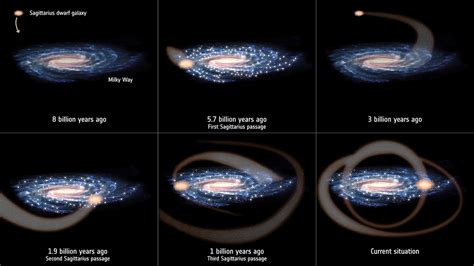Galactic chaos at cosmic noon may have stunted the formation of planets within our beloved Milky Way. Yes, you read that right! While we often think of galaxies as harmonious celestial bodies, a recent study has shed light on the tumultuous past of our galaxy and its impact on planet formation.
Picture this: stars in a thin, flat disk cutting through the center of the Milky Way are more likely to be accompanied by planets compared to their counterparts in a thicker disk surrounding them. But why is this the case? Well, according to astrophysicists Tim Hallatt from MIT and Eve Lee from McGill University, it all comes down to where these stars originated.
Hallatt suggests that stars currently residing in the thick disk of the galaxy were born during a period of galactic turmoil known as “cosmic noon.” This era marked an intense phase of star formation when newborn stars unleashed powerful radiation into their surroundings. Imagine being bombarded with radiation millions of times stronger than what modern-day stars experience – it’s enough to disrupt any budding protoplanets trying to form around these early stars!
Expert Insight:
Tim Hallatt explains,
“Stars born at cosmic noon had less opportunity to form planets because their disks were destroyed by intense radiation.”
As Hallatt and Lee delved deeper into their research, they focused on super-Earths and mini-Neptunes but believe that this phenomenon extends to larger planets too. The duo calculated that the intense background radiation during cosmic noon could obliterate planet-forming disks within a mere few hundred thousand years. To put things into perspective, modern planet-forming disks typically last for millions of years before completing planet formation.
Expert Analysis:
Astrophysicist Thomas Haworth states,
“Connecting environments like newborn stars and planet-forming disks to eventual planets is challenging but essential for understanding planetary formation.”
This groundbreaking study not only unveils the turbulent past of our galaxy but also emphasizes how environmental factors can significantly influence planetary systems’ evolution. By bridging the gap between different stellar environments and planetary outcomes, scientists are gaining valuable insights into the complex interplay shaping our cosmic neighborhood.
So next time you gaze up at the twinkling night sky, remember that each star has its own story – a tale woven into the fabric of our magnificent Milky Way. It’s a reminder that even amidst chaotic beginnings, beauty and wonder can emerge against all odds.
—
Would you like more stories about our fascinating universe? Reach out via email at [email protected] with your thoughts or questions!






Leave feedback about this